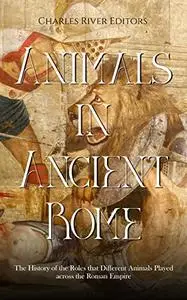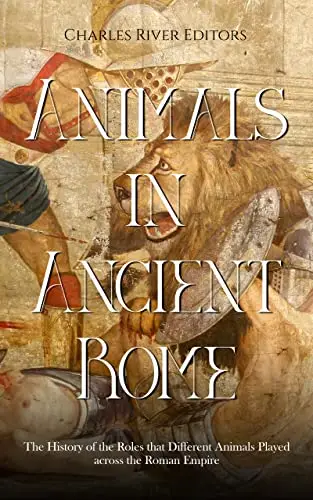Animals in Ancient Rome: The History of the Roles that Different Animals Played across the Roman Empire by Charles River Editors
English | December 1, 2021 | ISBN: N/A | ASIN: B09MX6BK7Y | 75 pages | EPUB | 1.79 Mb
English | December 1, 2021 | ISBN: N/A | ASIN: B09MX6BK7Y | 75 pages | EPUB | 1.79 Mb
*Includes pictures
*Includes excerpts of ancient accounts
*Includes a bibliography for further reading
*Includes a table of contents
Rome's complex relationship with animals goes right back to its foundation myth, and even today, the wolf remains a symbol of the Eternal City, forming part of the logo for the capital's football team, A. S. Roma. According to tradition, the city of Rome was founded by Romulus, who, with his brother Remus, was nursed and sheltered by a she-wolf. That tale, widely believed as a historical fact by ancient Romans, had a profound influence on Roman culture, and in part that shaped Roman attitudes toward their animals. The actual cave where Romulus and Remus were said to have been raised, the Lupercal, is thought to have been situated on the Palatine Hill in the very heart of Rome, and there was a claim by some archaeologists it had been found in 2007. True or not, the story of the wolf and its link to the beginnings of Rome continues to intrigue modern citizens, and the recent return of a family of wolves to the outskirts of Rome was greeted with wild enthusiasm.
Other than the tale of the she-wolf with Romulus and Remus, the overriding images and stories of Roman animals that have come down through popular culture to modern times largely concern the vicious animal fights put on in the Colosseum, stories of Christians being thrown to the lions, and Hannibal's invasion of Italy with elephants. Indeed, the widely accepted view is that Romans were uncommonly brutal to their animals and had little empathy for them, and in terms of the Romans' scientific knowledge about animals, it appears much of it came to them from the Greeks. In addition to the many treatises from such authorities as Aristotle, they were also influenced by Greek debates about the nature and origin of animals, their place in the world vis a vis humanity, and ethical issues surrounding whether animals were creatures to be used, no matter the cost, for the benefit of mankind. While the Greeks fretted for centuries about such key issues as whether animals had souls and what, precisely, the gods had intended when they created them, the Romans, generally speaking, quickly reached pragmatic decisions.
Gandhi once asserted, "The greatness of a nation and its moral progress can be judged by the way its animals are treated." If so, the numerous visual representations of animals on buildings and in art, mosaics, and on grave monuments, as well as the enormous number of references to animals in literary works, all explain quite a bit about Rome. A detailed analysis of Roman attitudes toward animals reveals a great deal of information about Roman society in general, particularly its sense of morality and ethics.
Feel Free to contact me for book requests, informations or feedbacks.
Without You And Your Support We Can’t Continue
Thanks For Buying Premium From My Links For Support
Without You And Your Support We Can’t Continue
Thanks For Buying Premium From My Links For Support



